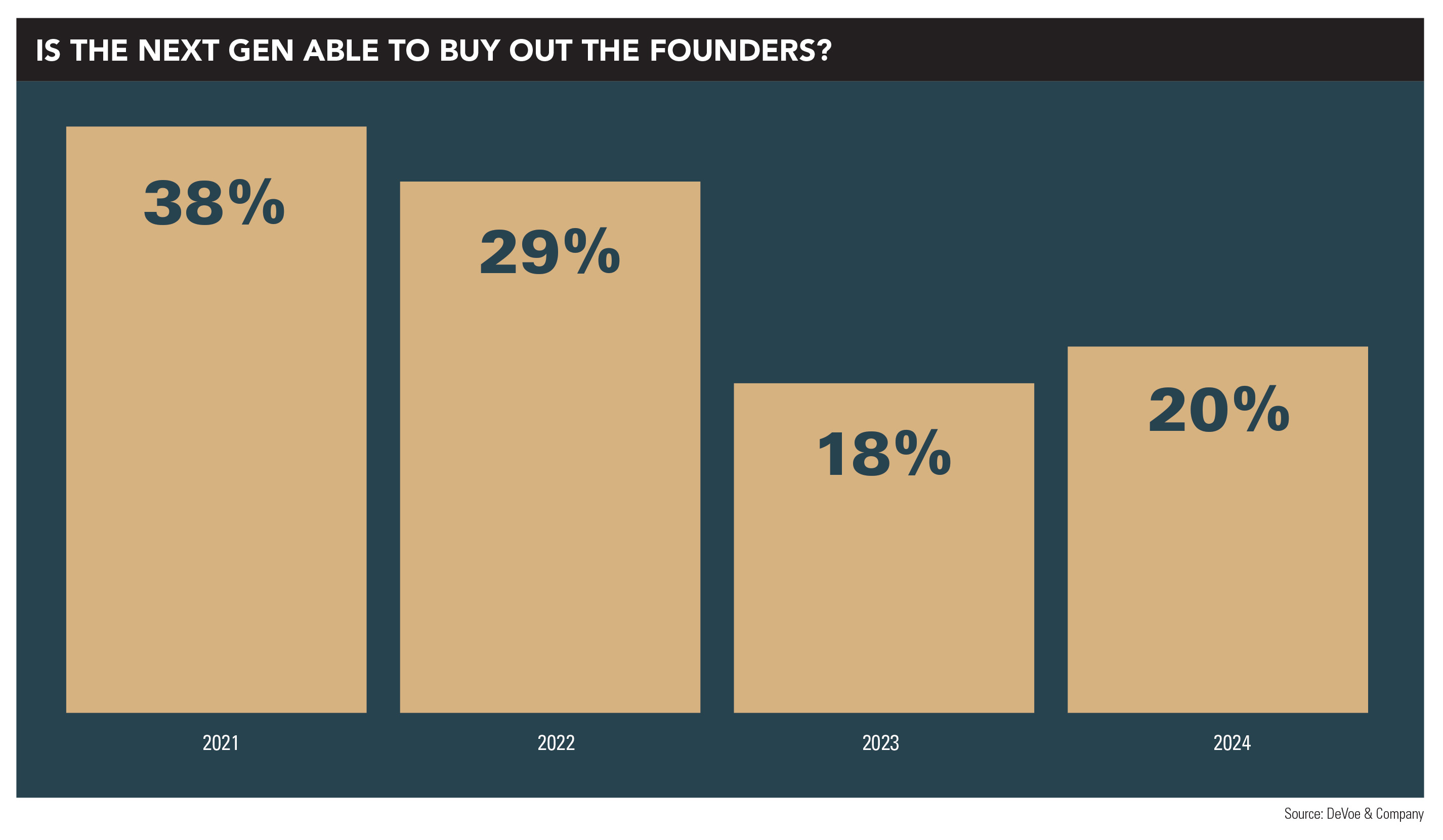

Among all the challenges and responsibilities facing owners of financial advisory firms, succession planning stands out as perhaps the biggest blind spot for the registered investment advisory industry.
According to Cerulli Associates, inside the more than 18,000 independent advisory firms serving investors across the country, nearly 40 percent of advisors are expected to retire over the next 10 years, and at least a third of those firms are operating without formal succession plans.
“So many advisors are focused on the business and they’re not planning for their own retirement,” says Stephen Caruso, associate director at Cerulli. “If they’ve been very successful, they see no reason to hang up spurs, so they are delaying succession planning.”
The success of the financial planning industry over the past several years is a key factor behind the lack of succession planning among firm owners, according to David DeVoe, owner of the investment banking and consulting firm DeVoe & Co.
“As recently as four years ago, 40 percent of advisors said the next-generation advisors could afford to buy out the founders, but as of last year that percentage is down to 20 percent,” DeVoe says. “The state of succession planning is very bad, and planners have not been very good at planning for themselves.”

In essence, as markets climb and more investors turn to financial advisors for help, the valuations of advisory firms move in stride. Couple that with the growing appeal of the RIA space among private equity investors, and you have a situation where fewer next-generation advisors can afford to buy out the retiring founders.
“The valuations keep going up while advisors are procrastinating on creating succession plans,” says DeVoe, who estimates that less than half of advisory firms have formal succession plans in place “and many of those are pretty flimsy.”
DeVoe says there is a “natural bias to sell internally” versus selling to outside investors, but that the rising valuations, combined with the complexity of succession planning, often lead to founders doing little or nothing.
“There are about 30 key components to developing a succession plan,” he says. “Advisors start going down the path and get overwhelmed and push it down the road.”
Charles Failla, founder and chief executive of Sovereign Financial Group, has a continuity plan in place “in case I get hit by a bus,” but he’s still working on his succession plan.
Failla is 56 and plans to stay involved in the nearly $1 billion advisory firm for another couple of decades, but he wants to start gradually moving away from daily business operations within two years. “I believe the best days are ahead for Sovereign, and I want to be a part of that,” he says.
Failla’s plan is to offer ownership stakes to key employees, which includes an initial down payment followed by payments coming from the profits.
“I retain 80 percent of the debt as a note that I will finance,” he says.
For example, the employee would put 20 percent down on a 10 percent ownership stake, entitling the buyer to 10 percent of the profits that will be used to service the debt.
“I’m paying myself back with my own profits because I want that next-generation person to work like they own the business,” he says.
Tim Holsworth, who retired in December as president of AHP Financial, started his succession plan a decade ago by hiring an advisor who could take over the business. The structure of the buyout has Holsworth earning income from the firm for the next 12 years.
“The key is giving the next-generation advisor all the tools and trust him,” Holsworth says. “Put him in a position where he knows the clients and the systems. Don’t hold back; tell him everything and show him everything.”
Andree Mohr, president of Integrated Partners, gives the nod toward the strategy employed by Holsworth.
“An effective approach involves bringing in the intended successor early and providing them with comprehensive training on all aspects of the business,” Mohr says. “This ensures they are well-prepared to take over both client relationships and business operations.”
Martine Lellis, principal at Mercer Advisors, says one of the challenges when it comes to creating succession plans is that they are not one-size-fits-all.
“Succession planning touches every part of the business: client outcomes, employee retention, growth trajectory, and even regulatory responsibility,” she says. “With the industry graying and client expectations growing, the window for thoughtful succession planning is shrinking. But done right, succession isn’t the end of the story – it’s the beginning of the next chapter.”

Greg Cornick, executive vice president of advice and wealth management at Osaic, focuses on five tips for creating a succession plan.
“Succession planning is not a quick process, so start early,” he says. “Ideally, advisors are thinking about succession planning 5−10 years before retirement or exit.”
Next, he advises ensuring business and cultural alignment. “From a business perspective, creating a formal, written succession plan is essential,” Cornick says. “Cultural alignment is just as important.”
Make sure to document everything. “Successful succession plans almost always have documented systems and processes that ensure the new advisor can easily navigate the transition,” he says.
And don’t be afraid to seek help. “From valuation and benchmarking to matchmaking and deal structuring, it’s not something you should navigate alone,” Cornick adds.
Finally, let the plan be a living document. “Succession planning is a dynamic process, not a one-time event,” he says. “The plan should be reviewed regularly to ensure it stays aligned with an evolving wealth management landscape, the firm’s goals, and the health of the business.”

Federal data show reports of at least $100,000 in losses skyrocketed to hit $445 million in 2024.

The fintech firms' latest additions, including veterans from Bloomberg and JPMorgan, come amid rising demand for alternative assets in the retirement space.

Steward Partners adds a $481 million Ohio-based team, while $35.7 billion &Partners expands its reach in Minnesota.

Emerson Equity and its advisor, Tony Barouti, were likely the largest sellers of defunct GWG L bonds.

Stan Gregor, Chairman & CEO of Summit Financial Holdings, explores how RIAs can meet growing demand for family office-style services among mass affluent clients through tax-first planning, technology, and collaboration—positioning firms for long-term success
Stan Gregor, Chairman & CEO of Summit Financial Holdings, explores how RIAs can meet growing demand for family office-style services among mass affluent clients through tax-first planning, technology, and collaboration—positioning firms for long-term success
Chris Vizzi, Co-Founder & Partner of South Coast Investment Advisors, LLC, shares how 2025 estate tax changes—$13.99M per person—offer more than tax savings. Learn how to pass on purpose, values, and vision to unite generations and give wealth lasting meaning
